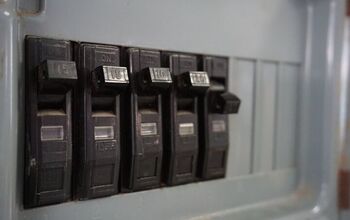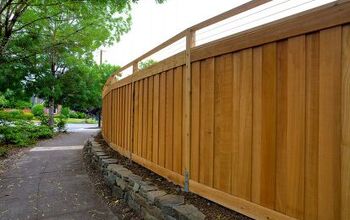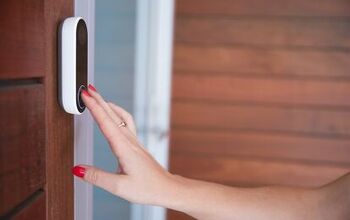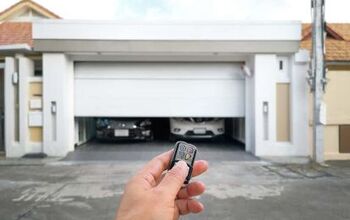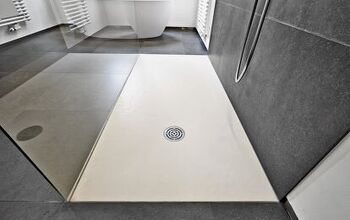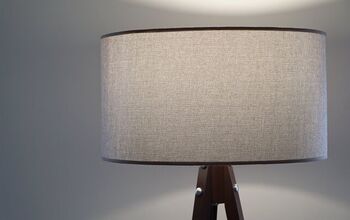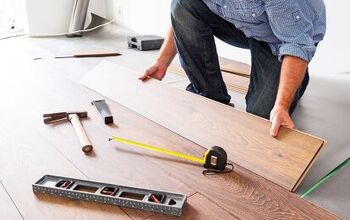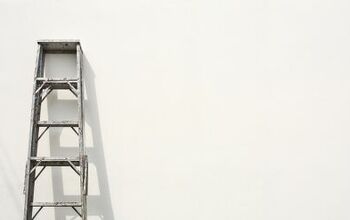Eight Ways To Unclog A Drain Without Harmful Chemicals

A clogged drain can ruin your morning and wreak havoc on your bathroom if left untreated. For many people, the first line of defense against a clogged drain is one of the many drain declogger products found in any home improvement store. While effective, these drain cleaners are loaded with toxic ingredients. If you prefer natural solutions, you’ll want to know how to remove clogs without using harmful chemicals.
If you have a clogged drain with standing water, use a plunger to clear the clog, or try a wet-and-dry vacuum to suck out the clog. A drainage snake is effective at removing tough clogs, and a wire hanger can be used as a substitute for a drainage snake. You can use natural declogging solutions, including a mixture of vinegar and baking soda, or boiling water and dish soap.
Clogged drains can occur suddenly or slowly over time. If you don’t have a drain cleaner or prefer to use natural ingredients to solve your issues, then keep reading. While harsh chemicals can clear drains, they are by no means the only solution to fixing a clog. Below is a list of effective methods you can try to clear your drain without using hazardous chemicals.
Eight Ways To Unclog Your Drain Without Harmful Chemicals
1. Remove The Clog With A Plunger
If you have a clogged pipe that connects to your sink, and no water is draining, then you should reach for your plunger. A small or standard plunger should work in most cases, but it all depends on the size and shape of the sink.
Place the plunger over the drain, and ensure it is submerged in water to help create suction. Use rapid pumps to shake the clog loose. After 15 seconds, stop and see if the water drains. Continue the process until you see the water flowing freely down the drain.
2. Enlist The Help Of Your Wet/Dry Vacuum
Another great way to remove a clogged drain that has standing water is to use your wet/dry vacuum. Find a hose attachment that fits around the drain completely. Then turn the vacuum on to try and suck up what's clogging the drain.
This method tends to work well if there is hair or some type of obstruction stuck in the pipe. It can loosen or completely remove it in many cases.
3. Snake The Drain
If you have access to a plumbing snake, then a clogged drain is the perfect excuse to use it. You can buy, rent, or even create a makeshift plumbing snake. They are highly effective at removing stubborn and advanced clogs.
Sometimes they are the last line of defence, especially when other clog-removing solutions aren’t working. Using a drainage snake takes some time to master, and these tools should only be used by those who understand how they work. Misuse can lead to bigger plumbing complications.
4. Mix Baking Soda And Vinegar
If you want to use a cleaning solution to unclog your drain without using harmful chemicals, then try using baking soda and vinegar. To use this natural drain de-clogging method, first pour boiling water down your drain, and let it drain. Then add one-half cup of baking soda for every cup of white vinegar.
These two natural ingredients will mix, foam, and work their way down your pipes. This bubbling and foaming can help loosen up and clear out clogs. After 15 to 30 minutes, you should pour more boiling water down the drain. Repeat the process until the water drains normally.
5. Use A Wire Hanger
If you don’t have a drainage snake but need to use a tool to pull or push a clog in your drain, you can try using a wire hanger. To use a wire hanger as a drainage snake, you first need to disassemble it and then straighten out the wire.
Next, slowly lower the wire into the drain, allowing it to bend with the pipe. You should be able to push through and loosen most clogs, especially ones that aren’t too far down the pipe.
6. Buy A Store-Bought Natural Cleanser
There’s a natural cleanser for just about everything these days. You can even find de-clogging solutions that are made of naturally derived ingredients. These cleansers generally contain enzymes that are effective at breaking down soap scum, hair, and other organic matter that clogs drains.
7. Pour Cola Down The Drain
If you have a minor clog and a lot of leftover cola, then you can try using this soda to unclog your drain. Cola and other dark sodas contain carbon dioxide and phosphoric acid. The combination of bubbles and the phosphoric acid helps to eat away at drain clogs.
To use cola to unclog your drain, you’ll want to add a full 2-liter bottle of this soda to an empty drain. Let it sit for a minimum of one hour. Then pour boiling water down the drain. This should help remove mild and moderate clogs.
8. Try A Mix Of Dish Soap And Boiling Water
Another easy liquid solution that can help loosen minor clogs is a combination of dish soap and boiling water. Dish soap can act as a degreasing and lubricating liquid, while hot water can help melt and push down greasy clogs, especially clogs caused by fat and greasy buildup. This method tends to only work on minor clogs and is great for fat-based clogs in kitchen sinks.
In addition to using dish soap, you can alternate and use salt and boiling water to help loosen minor grease clogs. Its chemical makeup and abrasive nature make it well-suited to clearing minor clogs along with boiling water.
Four Great Habits That Will Help Keep Your Drains Free Of Clogs
1. Always Use A Drain Screen
The best way to prevent clogs from happening is to always use a drain screen. This is particularly true if your kitchen sink doesn’t have a garbage disposal. Drainage screens are good to have in every drain from your kitchen sink to your bathroom sinks, and even your shower.
They help prevent larger objects, hair, and soap scum from reaching your pipes. The more solids you keep out of your pipes, the less likely they are to clog.
2. Know Which Liquids Should Never Go Down Your Drain
Another tip to reduce the number of clogged drains in your home is to know which liquids should never go down the drain. The main substances you should never dump down a drain include animal fats and oils, paint, and any other liquid that can turn into a solid.
Keeping these harmful liquids out of your drain will go a long way in helping keep your pipes clean and clog-free.
3. Pour Hot Water Down The Drain Regularly
Even if you use drain screens, it’s still smart to regularly “wash” your pipes. You should make it a weekly habit to pour boiling water down your drain. This will help loosen up any buildup and keep your pipes completely clean and open.
This is a task you should do weekly, or even any time you have extra hot water left in your kettle.
4. Be Careful Of Granules That Can Pass Through Drain Screens
Remember that even drainage screens aren’t foolproof. Several solids can easily sneak through drainage screens and cause your drains to clog. Coffee grounds, sand, and other tiny granules should be kept out of the sink, as they can quickly add up and back up your pipes.
Summing Up How To Unclog A Drain Without Toxic Chemicals
Clogged drains can back up your sinks and mess up your daily routine. There are lots of quick fixes, but many of them involve harsh chemicals. If you want to get rid of clogged drains without using harsh chemicals, try using a plunger or wet-dry vacuum to loosen up and remove the clog. You can also use a drain snake or a wire hanger to push through a clog. You can buy natural enzyme solutions that are designed to unclog drains at most home improvement stores. Alternatively, you can create a liquid de-clogger solution using white vinegar and baking soda. For minor clogs, try pouring dish soap and boiling water, or even a 2-liter bottle of cola down the drain to remove the blockage.
Related Guides:
- Who Is Responsible For Clogged Drains? The Tenant Or Landlord?
- How To Fix A Slow Draining Sink With A Garbage Disposal
- Can Coffee Grounds Go Down The Sink?

Tom Gaffey is an expert writer who currently resides in Washington D.C. Tom has a passion for real estate and home improvement writing, as well as travel and lifestyle writing. He lived the last twelve years in Hawaii where he worked closely with luxury resorts and event planners, mastering his knowledge of aesthetics and luxury products. This is where he found his passion for home improvement and a keen interest in DIY projects. Currently, Tom resides in Washington D.C, and also working on his debut fiction novel.
More by Tom Gaffey

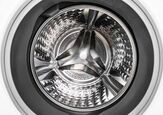
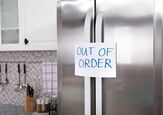







![The 10 Best Table Saws - [2022 Reviews & Buyer's Guide]](https://cdn-fastly.upgradedhome.com/media/2023/07/31/9070645/the-10-best-table-saws-2022-reviews-buyer-s-guide.jpg?size=350x220)
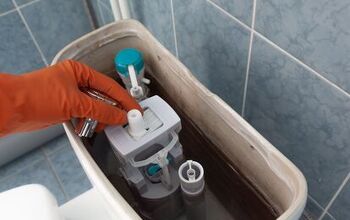

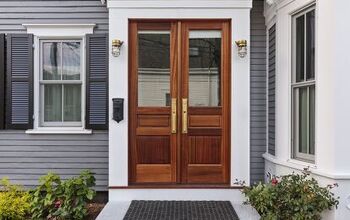
![10 Best Electric Lawn Mowers - [2022 Reviews & Top Rated Models]](https://cdn-fastly.upgradedhome.com/media/2023/07/31/9070486/10-best-electric-lawn-mowers-2022-reviews-top-rated-models.jpg?size=350x220)

